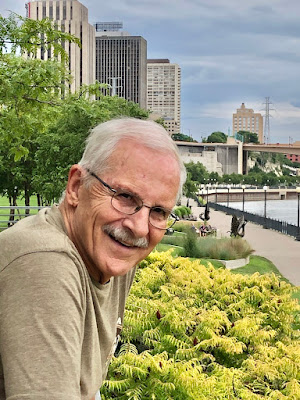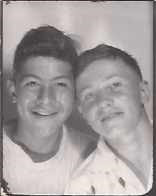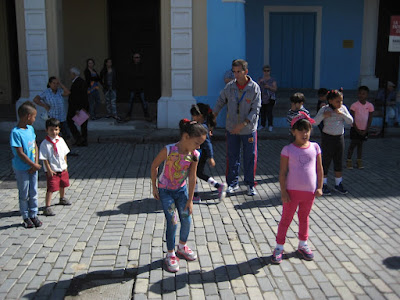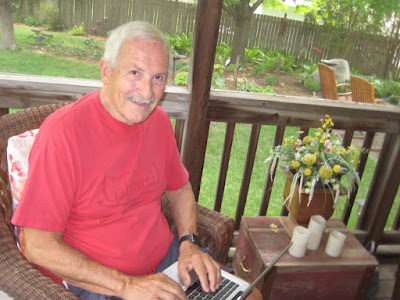It had to happen. A beautiful national park being dragged into the
modern-day era of adventure tourism with a promise of fine wine at the end of
each evening and brilliant sunsets at no extra cost. I really can’t complain.
Costa Rica, like so many other Central American countries, is simply trying to
cash in on the beauty of this treasured piece of God’s handiwork.
I was fortunate enough to have been there at the beginning. Back in the
early eighties, the park had been carved out of thousands of acres of pristine
jungle on the Osa Peninsula in south-western Costa Rica. National Geographic
has called it “the most biologically intense place on Earth in terms of
biodiversity.”
Adventure tourism has gotten in bed (literally and figuratively) with
health and wellness eco-tourism to form a new brand of travel. Exotic locations
are now the scenes of breathtaking views, fine accommodations, health and
wellness curriculum; all in a jungle environment. It had to happen even to a
true jungle wilderness.
Some describe this new kind of travel tourism as a kind of wellness utopia
where thermal bathing blends in naturally with family-friendly water-based
activities. Most of these new health resorts and lodgings feature both ancient
and contemporary treatments – from acupuncture to IV vitamin cocktails along
with a ready mix of well-being practitioners, fitness trainers, and health
coaches, all promising personalized care for mind, body and spirit. From that
perspective, Costa Rican planners got it right. The Corcovado landscape is
gob-smack in the middle of paradise.
The landscape was always that way even back in my time. It just didn’t
offer up high-count Egyptian sheets and fine wine at sunset. In fact, my first
view of Corcovado National Park was the sight of a crashed aircraft at the end
of our rough grassy runway. At that time, 1983, the only way in and out of the
huge park was by flying in on small aircraft, four passengers each.
The park had just been created by the National Department of Tourism.
That agency was anxious to get the word out on the wonders and beauty of the
park. They focused on journalists from around the United States, especially
those associated with local public television outlets. My boss was contacted by
them and I was given that assignment; to tell the story of Corcovado National
Park.
Gathering up at the airport in San Jose, I could see it was an odd
collection of photographers, journalists, newspaper veterans and a few old
well-seasoned salts thrown in for flavor and intrigue.
Our accommodations were primitive at best. We were each assigned tents
and sleeping pads and mosquito netting if we were lucky. Sleeping in tents, no
ground pads, took several days to adjust to the hard ground surface.
Every morning after breakfast, we hiked a different route through the
jungle. The rules of jungle hiking are really quite simple. First, jungle
terrain is seldom flat. That only happens in Tarzan movies. It’s usually hilly,
rugged and laced with jungle vines that can send you sprawling down a slope in
nothing flat. Caution was the word.
Our guide told us right up front there were a wide variety of ways to
get killed in the jungle. In our case, that could have come in the form of six different
varieties of poisonous snakes, anyone of which could have killed us with just
one small nick of their fangs. Yet on we trudged through the nearly
impenetrable jungle in search of some great cinematic shots, which
unfortunately, we never got.
Secondly, we were told to watch out for spider monkeys. They love to
pee on you as you pass underneath. Howler monkeys just yell a lot. Most frogs
are poisonous so don’t touch.
The third rule is also pretty simple. Snakes will kill you if they can.
Watch where you step or be prepared to die. Never step over a log or object on
the ground. Never lean up against a tree. Always step on top of the log then
step over to the other side. Look at the tree first before you lean against it
or sit next to it.
There were many species of venomous snakes in the park. The
Fer-de-Lance and Bushmaster were tops in their game. One bite…thirty
minutes…hello, heaven. Even the poison dart frog could do you in.
I can still hear them, almost 40 years later, scrambling above us and
howling at our presence down below. It’s like a musical refrain cemented in my
brain; haunting yet so familiar. The jungle can do that to you. It can
enlighten, threaten and even kill you in a heartbeat.
On the first day of a long hike, I casually asked our guide if he had
snake bite serum with him after he described the numerous poison snakes that
abounded in Corcovado. He said no, he’d left it back at base camp, a four-hour
hike away. I guess when your time comes, it comes. We all walked a little more
gingerly back to camp that day.
Foresight isn’t my forte. Yet, even as I was trudging through the
jungle, I knew this was the chance of a lifetime. I tried to soak up as much of
the atmosphere as I could. That included the stifling heat, humidity, insects,
poisonous snakes, sharks in the rivers, strange sounds day and night, sleeping
on rocks, listening to the barking of the Howler Monkeys, and drinking warm
beer.
Those three weeks in Corcovado produced many wonderful experiences and
great memories with some fascinating folks. I should be so lucky to hear those
howling monkeys ever again.
Now, fast-forward forty plus years and Brian’s family just returned
from a wonderful vacation trip to Costa Rica. While, they didn’t visit
Corcovado they did get a true taste of a Costa Rican jungle and beach front
fun.
As the saying goes, time changes all things. Even that impenetrable
jungle finally fell to the joyful sounds of kids just having a good time. Not
quite my experiences there but still a wonderful feeling for all. Corcovado has
a brand-new audience to savor its charms and enjoy spectacular sunsets.
























































